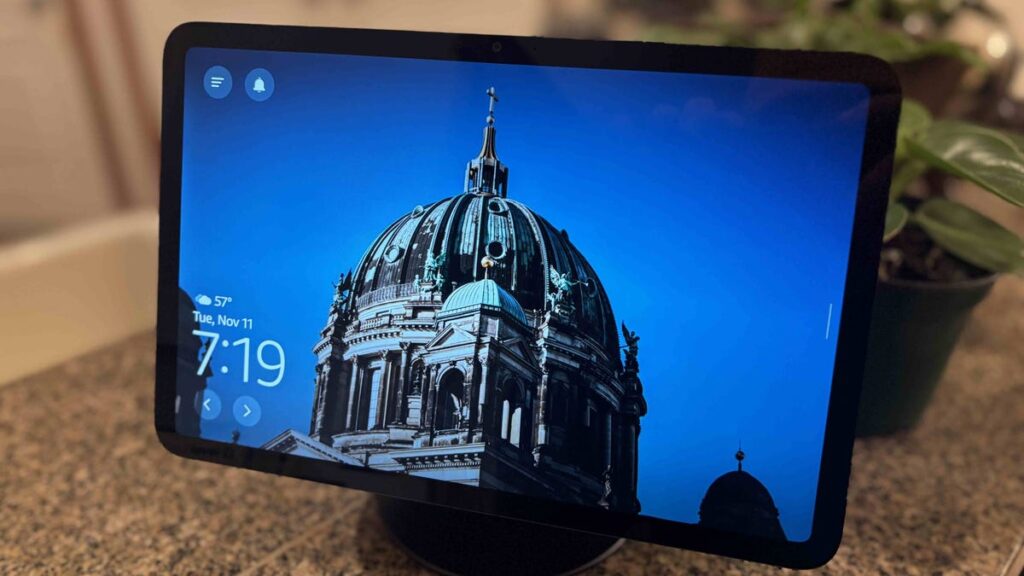A smart display lets you keep up with the game while working on your hobbies.
Prices
Smart displays are naturally more expensive than smart speakers, but they still come at a variety of prices. Smaller displayers and speaker systems typically cost around $100. Larger, better versions are around $150. Big displays with very good sound tend to land around $200 to $250. And gigantic models like certain Echo Shows can go even higher. Find the speaker that works within your budget.
Screen size
Displays on these devices typically range from around 7 inches to 10 inches, plus Echo Shows that go to 15 inches and beyond for more TV-like displays, often mounted on walls. The 6- to 7-inch displays we like best are close at hand, like at a desk or bedside. Walk a few steps away, and you can no longer see most of the details on them. The 10-inch style models like the Echo Show 10 and Nest Hub Max are better in larger rooms — we can walk several steps away and still get enough detail to watch videos, etc.
Cameras and privacy
Cameras allow for video chats. If you don’t video chat with a smart display, you don’t need to worry about it, although you may want to make sure the camera has a physical shutter. If you do want to video chat, look for models that have reliable cameras and the right privacy features for use (that physical shutter is again an important addition).
Voice assistants and smart home compatibility
We have options on this list that offer both Google Assistant and Amazon Alexa as the voice assistant available to help with questions and smart home controls. It is important to pick the smart display that best matches what you already use. If you have an Echo device already in your home, then going with an Echo Show will seamlessly integrate into your home. But if you have a Google Home device, then you’ll want a Google Assistant display. We’ve found Google is a bit better at searches and general questions (imagine that) while Alexa is better at quick commands, smart home controls and parsing home-related information. Siri, if Apple ever produces a smart display, is great at contextual info and providing helpful details like when asking about the weather, but doesn’t read answers off the internet as well.
Smart displays can do things your phone or speaker can’t: Here are our favorite options.
How and where you’ll use it
If you plan to use the smart display primarily for controlling your smart home, and you use Alexa, then you’ll likely want to go for the Echo Hub. But if you want more of an all-around device that will work great for watching videos, then perhaps a Google Hub Max, Echo Show 10, or Echo Show 15 would best suit your needs.
Likewise, think about where you are going to use the display. A bedroom smart display that functions as an alarm clock and morning news report device doesn’t need to be very large, but should have excellent brightness and light settings. A device in the kitchen may benefit from a larger screen so you can see it more clearly while working. A display on a counter that plays a lot of music and controls a big smart home should have great speakers and mics.
The amount of space you have on your table or counter
You’ll want to consider where you’d like to place this smart display. While something like the Echo Show 8 (2023) or Google Nest Hub (2nd gen) don’t need much room, the Echo Show 10 does. But if you go with the Echo Hub or Echo Show 15, you can mount those on the wall with the included hardware to free up more space on your table or counter.
Read the full article here


